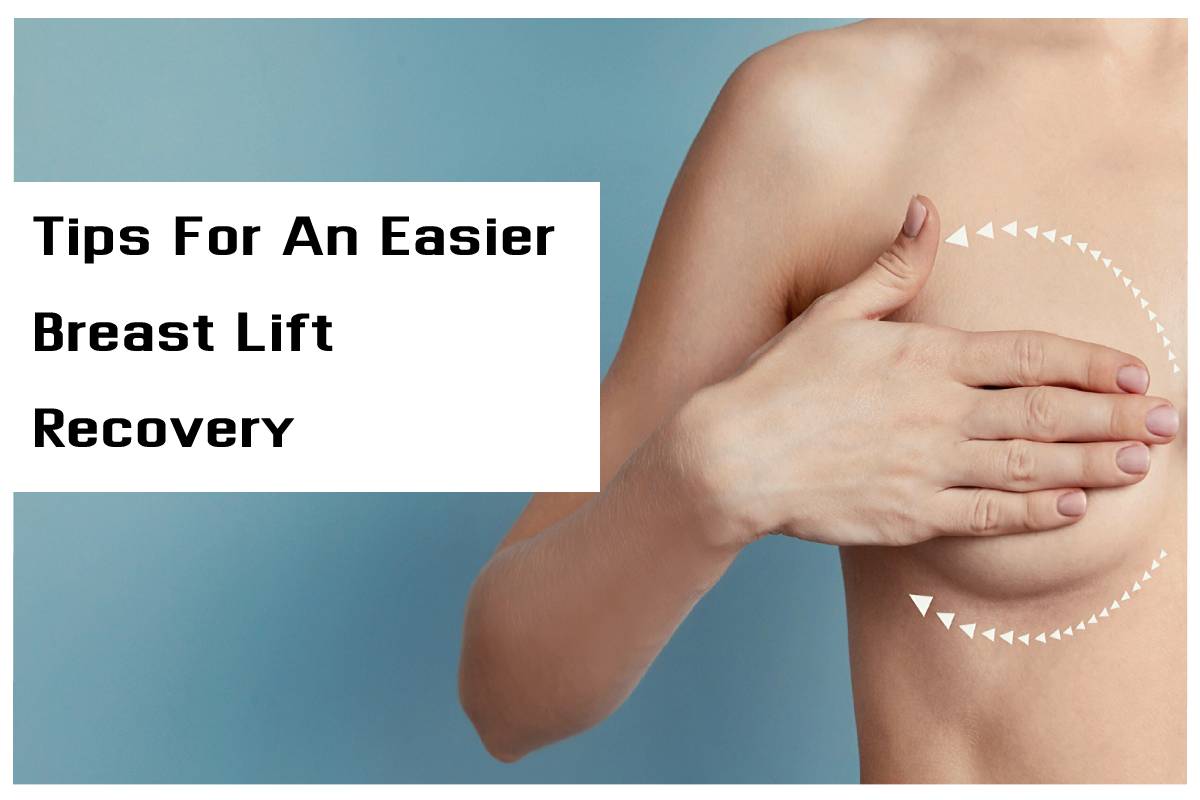A breast lift is a cosmetic procedure that improves the perkiness of the breasts, making them appear more youthful. It is ideal for those concerned with having drooping breasts. This is often the case if you have been pregnant or lost a significant amount of weight. By undergoing Breast Lift (Mastopexia) surgery, it will enhance the overall look of your body.
Recovery after breast lift surgery is an individual experience for each patient. It is due to many variables, including the patient’s health, age, the extent of the surgery, and more. There is a set of guidelines that all patients should adhere to following a breast lift procedure, although each patient’s recovery will be unique. Fast and easy healing depends on following these guidelines.
Table of Contents
8 Breast Lift Surgery Recovery Tips:
To make your recovery after breast lift surgery as fast, pleasant, and painless as possible, the following are some recovery ideas for you.
Care For Your Incisions:
Make sure to keep your surgery incisions clean and examine them often for any symptoms of infection. If your incisions were covered with steri-strips, your surgeon may ask that you keep them dry so that they don’t come off prematurely the next day. You’ll get your stitches out after a week, but they are typically absorbable and made to disintegrate naturally.
It is best to avoid the pool, jacuzzi, or bathtub for at least 2 weeks after your surgery, depending on the sutures you have and your surgeon’s assessment. Breast lift patients should avoid driving for at least three days after their surgery since this might cause bleeding or widening of scars in the incisions. For a more precise timetable, speak with your surgeon.
Don’t Sleep On Your Stomach:
Naturally, your chest will be painful and unpleasant after your treatment. Your front should spare any strain. To speed up the healing process, it’s best to sleep on your back. Trying to sleep on your back if you’re a front-sleeper may be a weird experience.
For a few weeks before your operation, try sleeping on your back to adjust to the new posture. Make sure you discover a solution to sleep after cosmetic surgery on your to-do list before anything else!
Eat Healthily And Stay Hydrated:
If your surgeon suggests it, you should cut down on salt consumption. It may assist in reducing edema. Keep in mind that you should drink at least 8 to 10 glasses of water each day. When you’re recovering after surgery, you don’t want your energy levels to drop, which is why it’s so important to stay hydrated.
Drinking plenty of water after surgery might also help with constipation. Make sure your body has the energy it needs to repair by eating a nutritious diet. Include foods high in vitamin K, such as lettuce, eggs, and yogurt, in your diet. Known for aiding healing and lowering edema, they’re popular. To avoid dehydration and fluid retention, abstain from alcoholic beverages for three weeks.
Take Only The Proper Medication:
Tylenol may be used as a substitute for oral pain medicine for up to three days. In certain situations, you may be prescribed antibiotics. Avoid any treatment, whether oral or topical, not prescribed by your surgeon, including over-the-counter pharmaceuticals or herbal supplements. Don’t take aspirin, fish oil, or vitamin E, since all of these drugs might thin the blood and induce bleeding.
Wear A Compression Garment:
Wearing a compression garment or supportive bra is usually recommended by your surgeon. A natural healing process is facilitated by this. Your rehabilitation will benefit from a compression bra, even if it looks and feels a bit strange. If you were able to see before and after images during your consultation, just be confident in knowing that your breasts will look amazing after the healing process regardless of how they may initially appear.
Avoid Strenuous Movement And Exercise:
For a period of two to three weeks, refrain from lifting or engaging in any intense activity. Six weeks following your surgery, you should avoid vigorous exercise activities.
The particular intricacies of your recovery will be determined by the kind of treatment that you choose. You can give your body the best chance to heal by following your surgeon’s instructions and recovery plan.
Care For Your Scars:
Your plastic surgeon will put the incisions in such a way that they are not visible when you are dressed after your breast lift surgery. Still, check your scar formation once the original incision heals.
Silicone bandages or creams may expedite scar repair after a wound heals. Maintain a healthy healing environment for your skin by taking regular showers to help prevent infection in the incision areas.
During the fading phase of the scar, you’ll want to avoid prolonged exposure to UV radiation. If you want a tan, you’ll have to wait until the following swim season. Tanning salons are unacceptable. Apply lots of sunscreens after you are allowed to put on a bikini and your incisions are healed, since sun exposure may color scars.
After healing has started, ask your surgeon to demonstrate your scar massage methods to help reduce the scar. If you or your surgeon observe the thickening of scars, steroid injections may provide or laser therapy may be an option to enhance the look of the scar. For some individuals, it may take many years for scars to disappear entirely.
Communicate With Your Surgeon:
If you are worried about anything, such as numbness or asymmetry in a portion of your breast, realize that these are common occurrences and will likely go away as your body recovers. Even if your issue appears urgent, such as indications of infection or hematoma, or if you have anything to ask your surgeon at your next follow-up appointment, do not hesitate to phone or write it down.






